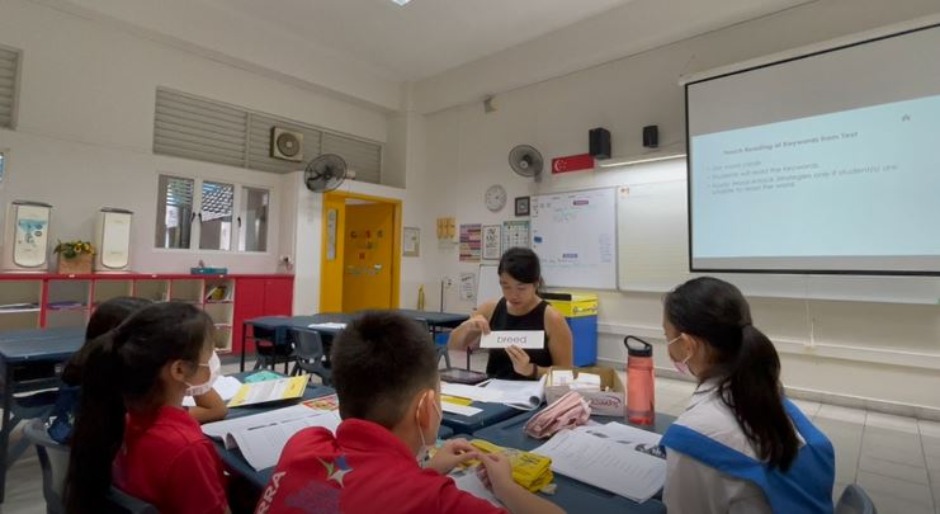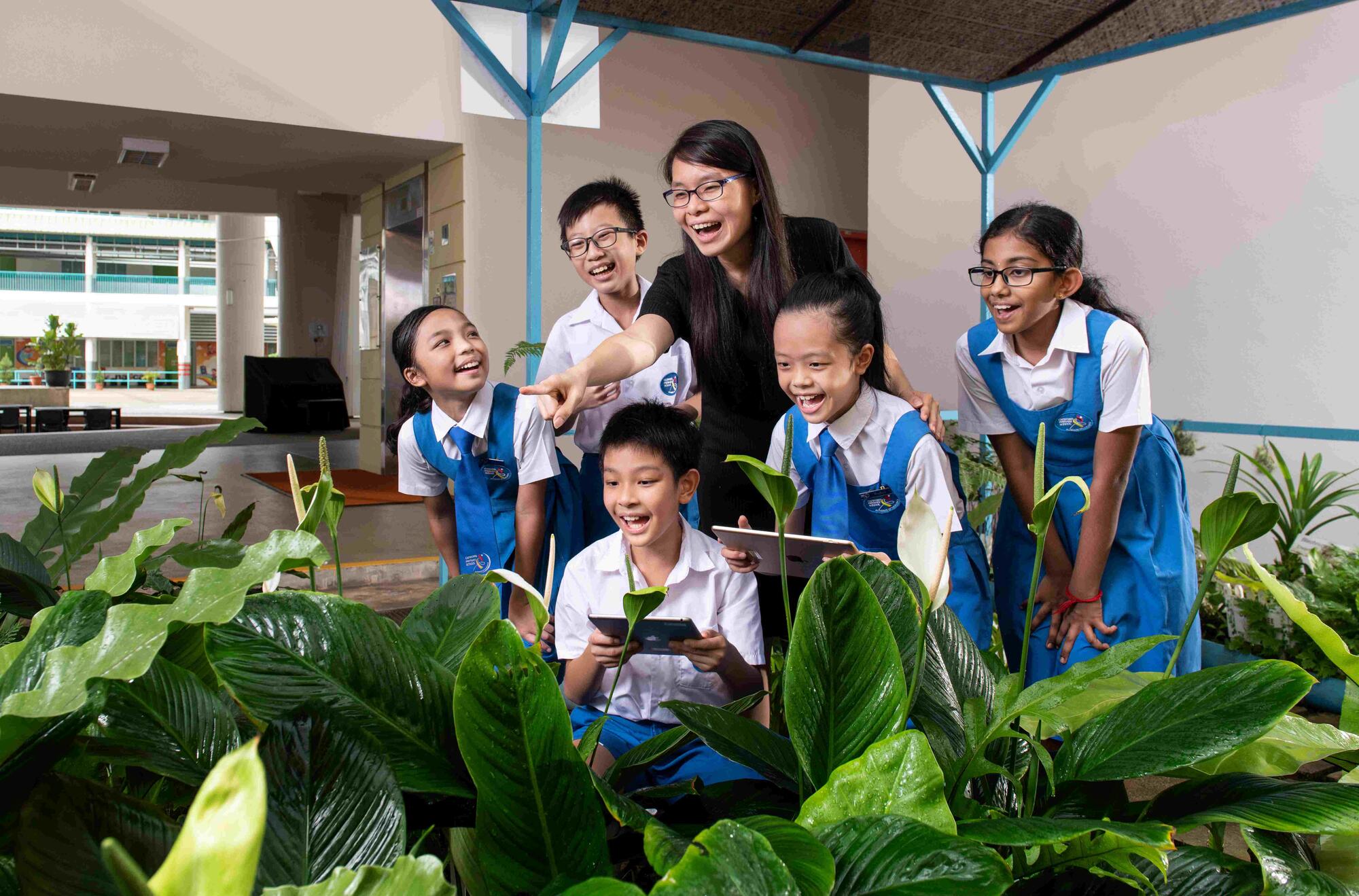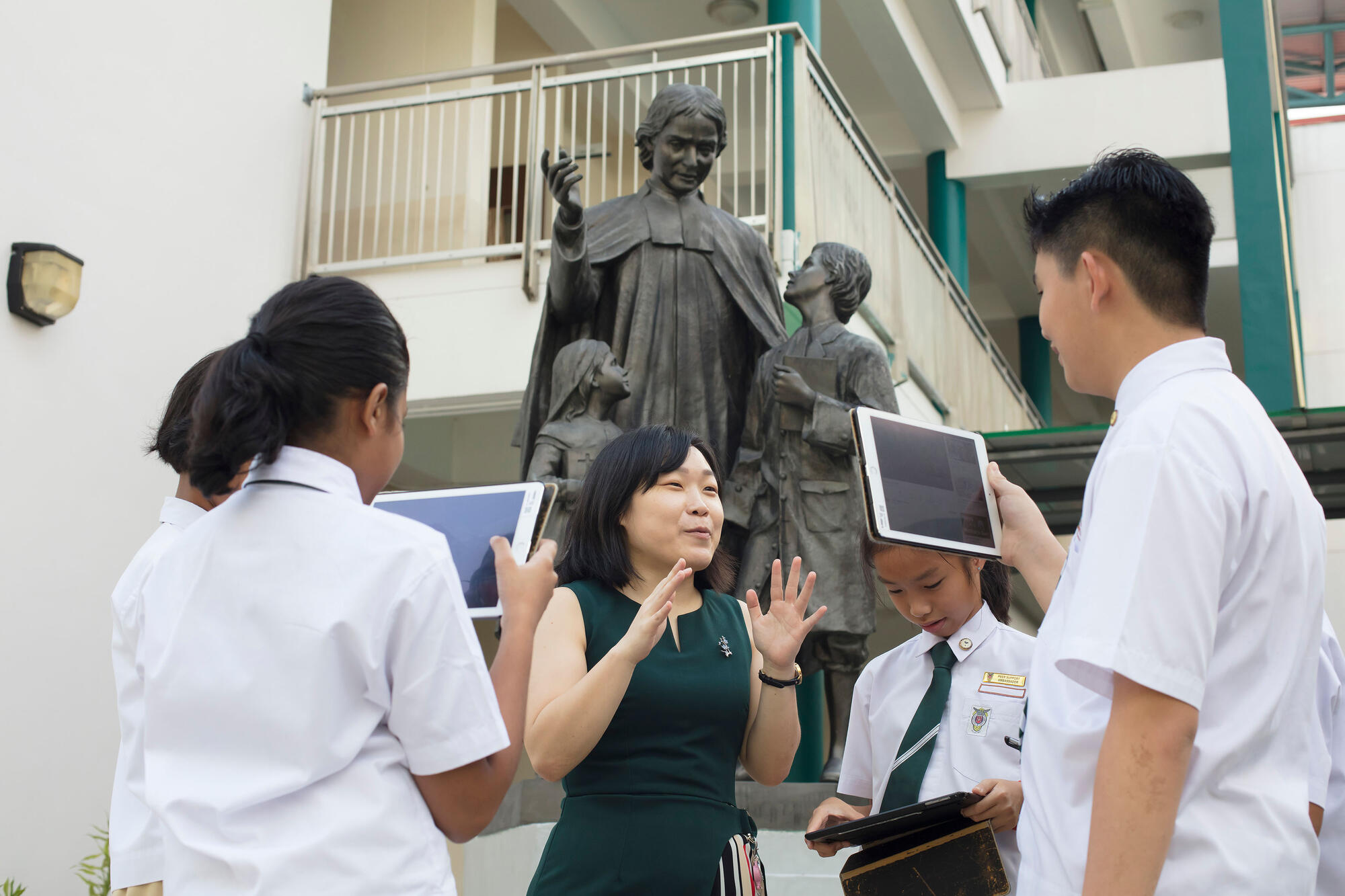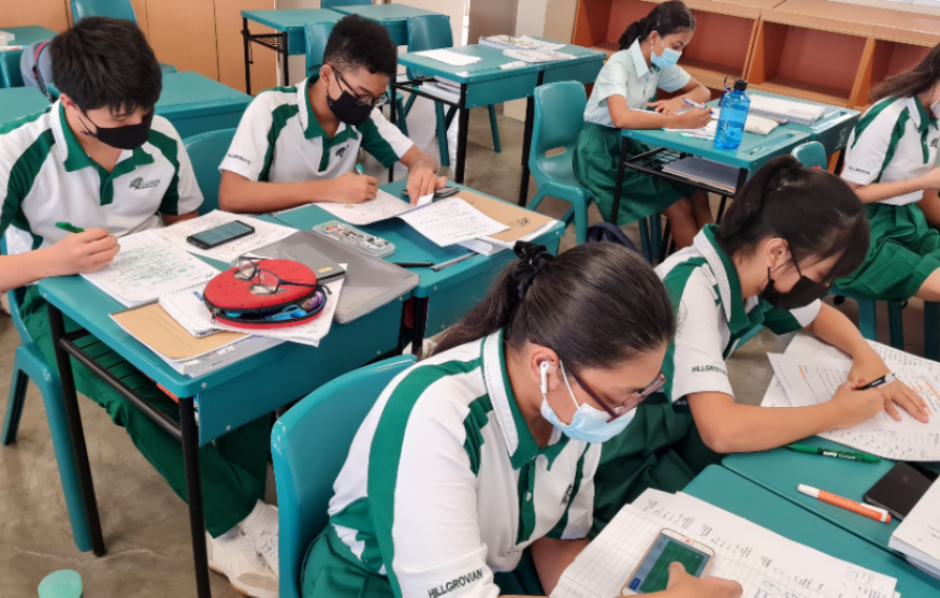Learning in Fun-filled Virtual Dimensions
03 May 2011
It was a bright morning at Canberra Primary School and a class of Primary 5 pupils were standing in line outside the school’s 4Di Lab. Judging from their faces, some were looking forward to savouring the air-conditioned environment but were they in for a surprise!
As they streamed inside the lab, 14 large screens greeted the class and immersed the pupils into a virtual panorama that brought the Shanghai World Expo before their eyes and ears. Shocked and awed (but in a good way), the pupils buzzed with excitement and could hardly bear to turn their eyes away from the screens as a teacher distributed Ultra Mobile Personal Computers (UMPCs) that would serve as gaming consoles for the day’s learning session.
Learning through play
Integrating virtual reality gaming with multi-model mobile learning, the 4Di lab supports learning through play – one of the core thrusts of Canberra Primary School’s FutureSchool@Singapore programme. Dubbed Canberra Live!, the programme lets pupils interact with various immersive learning environments such as ‘Historical Singapore’, ‘Rainforest’ and ‘Shanghai Expo’.
Back in the lab, the class received a briefing from the school’s Infotech Communications Executive Mr Alief Hamdani, who showed them how to use their UMPCs to navigate the virtual Expo. Suddenly, a panda appears on one of the screens. Realising that an over eager pupil had jumped the gun in activating a game avatar before he had a chance to set the ground rules, Mr Alief asked, “Who is this? Please be patient and wait for the rest of the class.” The avatar quietly vanished.
Raring to start the lesson, the pupils focused their attention on large tokens scattered across the screens, each bearing a symbol associated with a particular country. Each country had eight tokens and the aim of the game was to collect all eight tokens by unlocking facts about the country. Thought trumps speed, though, as selecting a token from a different country meant they would have to start all over again.

Students learning more about the UAE using the touchscreen which brings up information about different countries.
As the pupils launched their avatars to collect the tokens, they soon realised that it was more effective to cooperate rather than adopt the strategy of every man for himself. Working together, team Belgium was making progress when a hasty team member unlocked a China token and sent everyone back to the drawing board. But all through the game, and through such errors, the pupils were actively learning and recalling information about their assigned countries as they tapped their screens to reveal new images and captions.
By the next round, the pupils had mastered the game, and team UAE sped off to collect all their tokens without a hitch. Every pupil emerged a winner, however, as the game had instilled in them new knowledge about countries they knew little about, such as the United Arab Emirates (UAE). And fittingly, this gaming session was held to mark International Friendship Day, an occasion to learn about other countries and cultures in the world.
Facts amid fun
It’s no surprise that the virtual Expo was a hit with the pupils, as the whole scene arose from their peers in Pri 4 and Pri 5 who visited the actual Shanghai Expo in 2010 with school Principal Mr Sam Wong. There, the pupils did interviews and took notes, photographs and videos, which they later curated for the virtual environment.
Mr Wong revealed that the school was developing more virtual environments such as ‘3 Kingdoms’ and ‘Monsters and Fairy Tales.” While entertaining, he stressed that education is still the goal of the system. “The 4Di programme harnesses technology to make learning fun,” he stated. “The Future School is about finding delight in knowledge and about students creating and owning content.”
“4Di can be used in different classes and levels,” added Vice-Principal Mr Kevin Patt. “Pri 1 pupils can walk through the ‘Rainforest’ to learn about the habitat whereas Pri 6 classes can play predator-and-prey to learn more about the food chain.” The latter game shows how animals behave and hunt through a selection of predator and prey avatars.
As they stepped out from the lab, Brian Chiang recalled the class’s earlier surprise. “I had thought we were going to watch a movie!” said the Pri 5 pupil. His classmate Judy Sophia Lam shared, “When I first came in, I wondered whether this was Singapore!”
Amid all the fun, the duo didn’t forget the facts, though. “The pictures were so interesting,” stated Judy. “I really enjoyed reading about the camels and sculptures in the UAE.” Declaring the virtual stadiums and buildings to be “really cool”, Brian was particularly impressed with a museum featuring huge dinosaur bones. “There was one with a huge mouth!” cried Judy and pointing animatedly at Brian, quipped “Bigger than his head!”






.jpg)


